Winning on Global Ecommerce, Silicon Slopes Tech Summit 2020 Recap
Silicon Slopes Tech Summit 2020 was a success! Read our recap of CEO Dave Wright's presentation on global ecommerce, our live graffiti artist, and more.
We had a blast last week as a Title Sponsor at the 2020 Silicon Slopes Tech Summit. We had 1,300+ booth visitors, spent 45 volunteer hours helping Slopes Serves make over 1M meals, and had nearly 3,500 views on our LinkedIn giveaways both days. We even had a live graffiti artist come make us a custom mural during the event. Check out these progress photos. End of day 1:
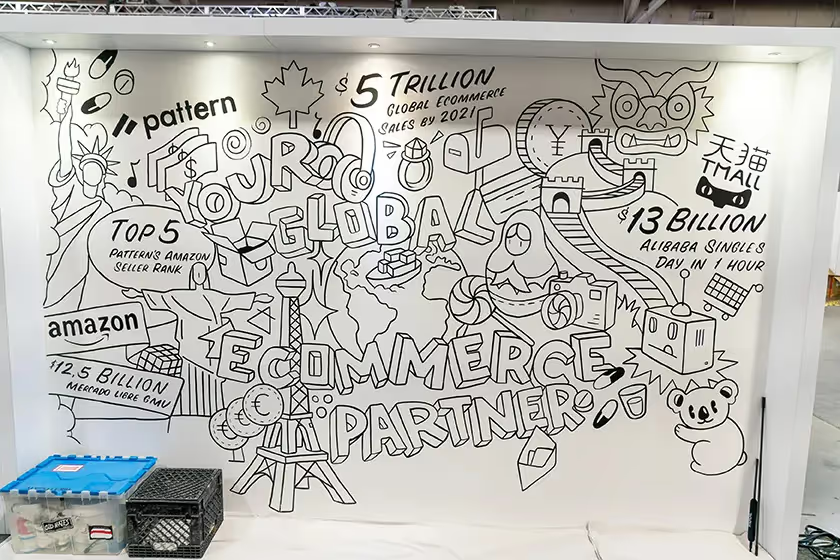
End of day 2, finished:
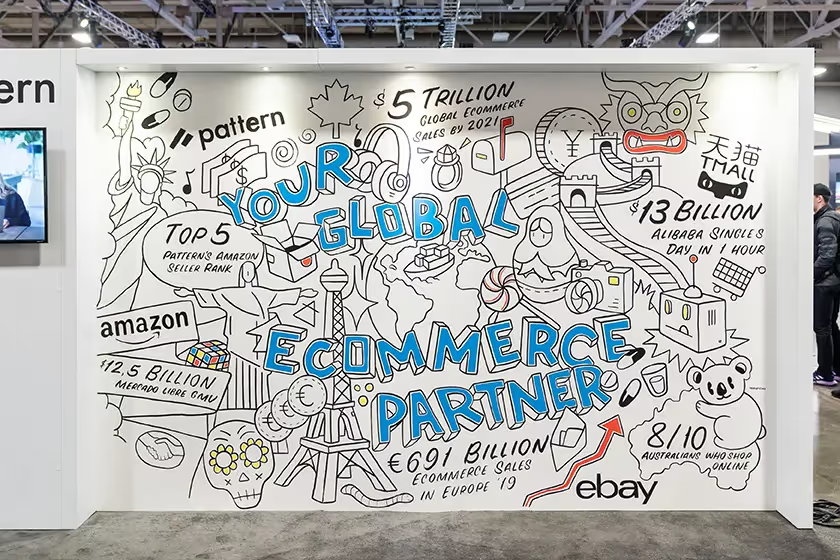
Our CEO Dave Wright gave a presentation on Thursday to over 2,000 people in attendance. Read on for a small summary of his presentation.
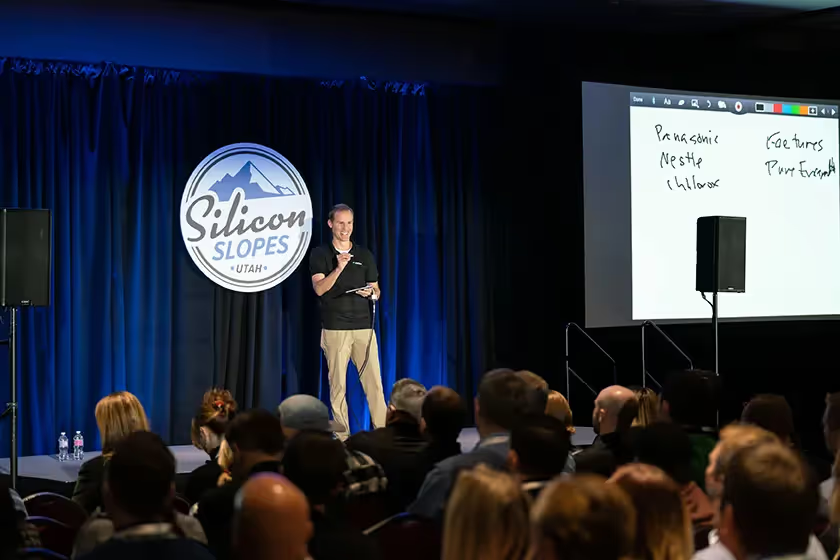
Evaluating the Global Ecommerce Landscape, Winning on Amazon Alibaba and Beyond
Ecommerce is scooping up more and more of the global retail sales, with no signs of slowing down. Ecommerce currently represents 13% of total retail sales, and for every 1% increase in that number, around 8,500 retail stores will close. So how do you move the needle in the ecommerce field and stand out from the competition? Dave spoke to a full theater on Thursday afternoon about global ecommerce and what it takes to get ahead.
Ecommerce equation for success
The equation for ecommerce success is pretty simple: Revenue = traffic x conversion x basket size (price) / repeat for lifetime value of customer.
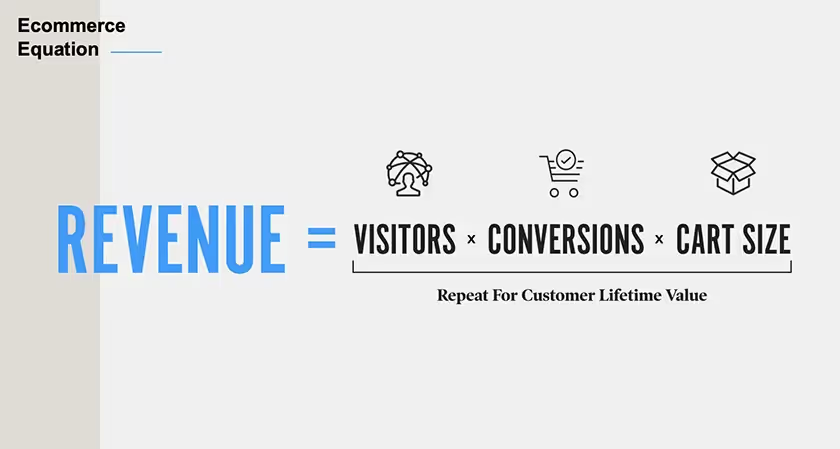
Of course, all that’s easier said than done. Some brands really excel at the traffic part, others at the conversion part, and still others dominate on increasing basket size. For example, Dollar Shave Club gained 76,000 subscriptions from this viral video alone. Talk about increasing traffic. Then Purple mattresses went from making 3-5 million sales to 300 million in just a few years. At one time, their Goldilocks video was the highest converting video on YouTube. Then there’s Delta, who we all know are experts are increasing basket size by offering add-ons to your flight.
Don’t miss out on China
Dave explained how brands in the U.S. focus almost entirely on Amazon. However, the truth is that the global opportunity is massive. For example, Amazon did $9 billion in sales on Cyber Monday last year, while Alibaba did $38 billion for Singles Day. China is lightyears ahead of the U.S. in terms of customer service and speedy shipping. For example, Dave said JD.com in China has 6-hour shipping across 99% of China. That gives a whole new perspective to Amazon's "speedy" 2-day shipping.
Marketplaces to watch for
There’s tons of competition for the brands out there, Dave explained. And right now, it’s true that many retail stores hold much of the weight. But will it always be that way? Consumers are looking for good prices, and they can usually find better prices online. Here are just a few of the domestic marketplaces Dave mentioned to watch out for and the advantage they have in the playing field:
- eBay: Focused on price.
- Walmart: Focused on grocery on ecommerce; has 2700 pickup locations; 90% of U.S. residents live within 10 miles of a Walmart.
- Amazon: They’re going after everything fashion; they recently put out a patent for a virtual mirror to let you try on clothes.
- Target: Seen as a high-end alternative to Walmart; has great brand equity with shoppers.
- Alibaba: Currently has 58% ecom share in China (which is much larger than Amazon’s share in the U.S.).
- MercadoLibre: Currently winning ecommerce in Mexico; has the large advantage in all of South America; knows the local nuances of what appeals to Latin Americans.
- Google Shopping: Has vast resources; they don’t want to become another Baidu; Google has a pretty well organized machine about where they’re going next with Google Shopping; 6 months ago they cleared their first billion in sales.
- JD.com: Offers 6-hour delivery 99% of China.
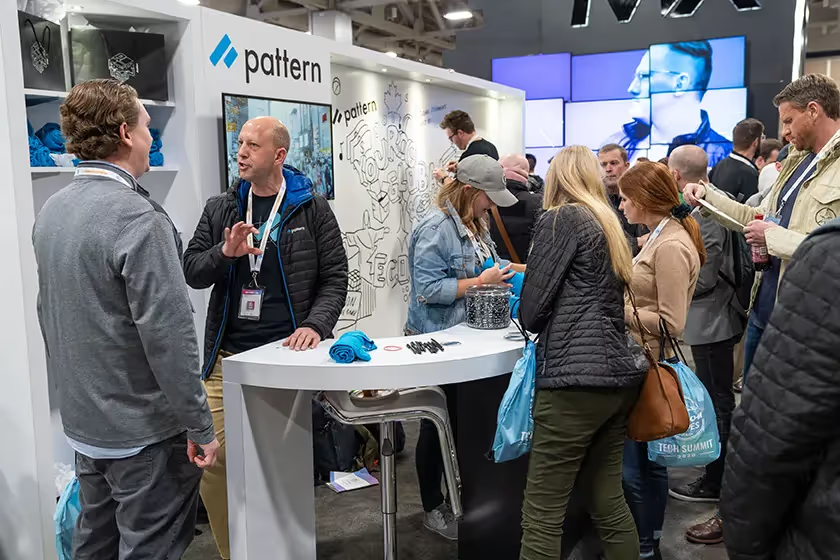
The executive dilemma
As we’ve just explored, global ecommerce is massive. The opportunities for brands are there! However, brands run into a problem: they only have between 1 and 3 ecommerce people who are supposed to tackle not only a D2C site with 3PL, logistics, Google SEO and everything else, but also Amazon, eBay, AND start going international. Frankly, it’s too much for one or two or even three people. “When companies are huge, it doesn’t mean that they’re ecommerce help is any bigger,” Dave said.

Pretty soon you start seeing this dilemma. What the executive team is asking their small ecom teams to do is virtually impossible. Enter Pattern. We don’t charge brands anything for our services because we buy product up front, generally at a higher margin than wholesale, and then sell it ourselves. So how do you know if it’s worth it to you? It all comes down to math, Dave said. Here’s the equation brands can use to figure it out: Priority multiplier = present value revenue / present value investment (percent confidence).
How to win on Amazon
Global ecommerce may be important, but that doesn't take away Amazon's importance in the U.S. Dave spoke how the same principles above apply—traffic and conversion drive sales. Here are a few quick tips Dave shared:
- If you have a quality product, you can win.
- Look for advertising bid adjacencies with advertising technology, like Pattern’s Predict software. (e.g. bids for “fish oil” are $11, but bids for “fish oil supplements” are just 22 cents.)
- Use product destiny calculations. We use these to decide what the destiny of a product is based on math. Once you decide what that is, you can stop spending money on it.
- Get creative right, and it’s essentially giving you free money. Our brand partner, Emerald Labs, had a 78% increase in conversion after our content update.
- Use bundles and Subscribe & Save to increase basket size at checkout.
- Uphold MAP. Some brands care more about price than they do about all the rest. Upholding MAP is a solvable problem, you just have to invest time and money to getting it done.
- Improve customer reviews. For example, in China, 80% of shoppers reach out to customer service before a purchase, and 50% reach out after a purchase. You’ve got to have a viable customer service team in place (and especially a local one in China if you’re selling there).
To win on D2C or not to win?
Winning on a D2C site is pretty similar to winning on marketplaces, Dave said. Having high quality images, product descriptions, and quick delivery are all essential. However, Pattern recently did a D2C Analysis of the top 100 D2C sites to see how good they are at running D2C. Turns out, not many are even getting the basics right. Here’s what we found:
- Only 35% had high quality images.
- Only 75% detailed product descriptions.
- 29% had no delivery info on the listing.
- Only 15% provided an exact delivery time at checkout (Amazon, on the other hand, gives customers the exact arrival time).
- Customer service was either really good or terrible.
- Only 27% had free shipping, 60% had free shipping with a caveat. (Amazon and the marketplaces are dominating because of free shipping.)

In summary, selling on Amazon is a linchpin in the U.S. Then you’ve got to nail the D2C, and start thinking about China. The future of ecommerce is yet to be set in stone, but you’ve got to know the global market to be a key player, and winning often comes down to doing the math to get it right for your brand. Learn more about how Pattern helps brands excel on global ecommerce by reaching out to us.


.jpg)





.jpg)

